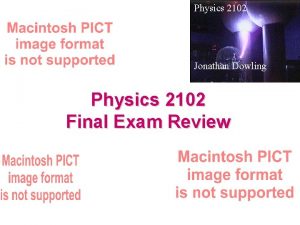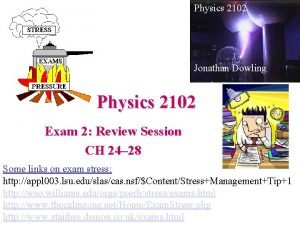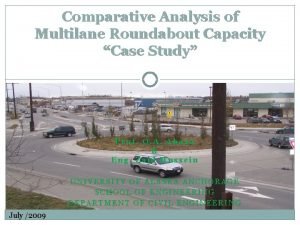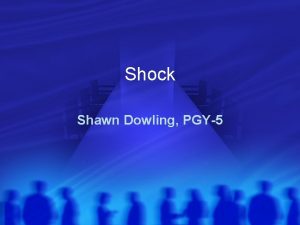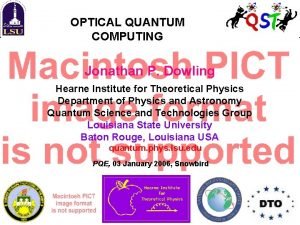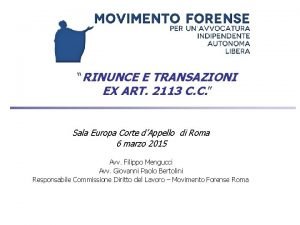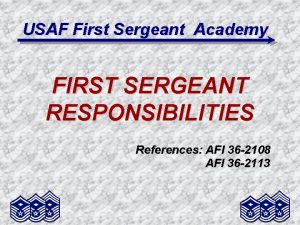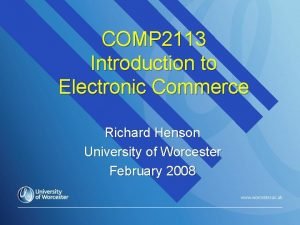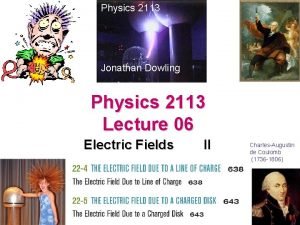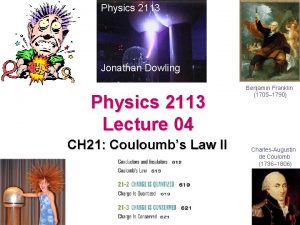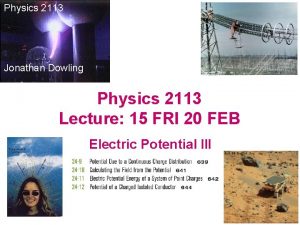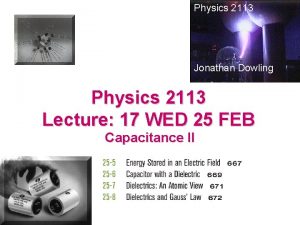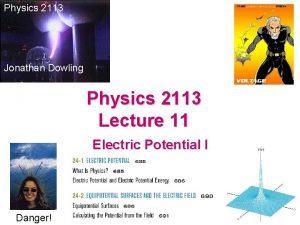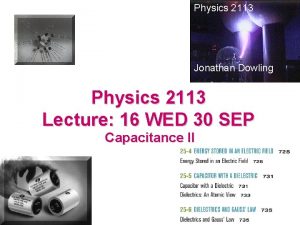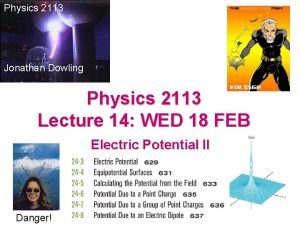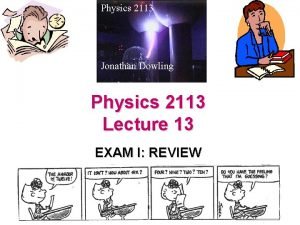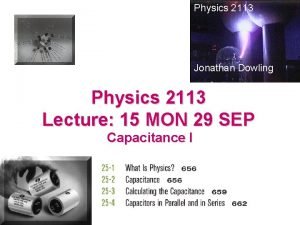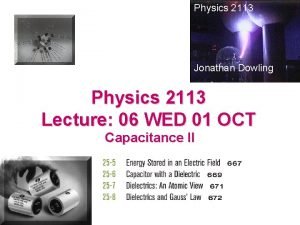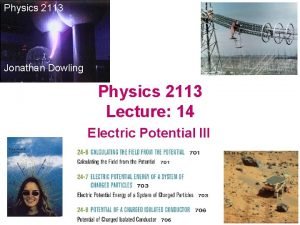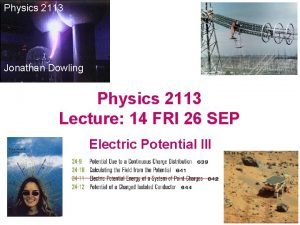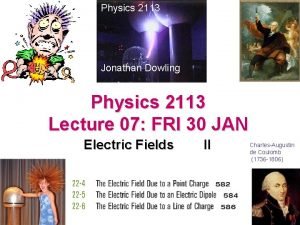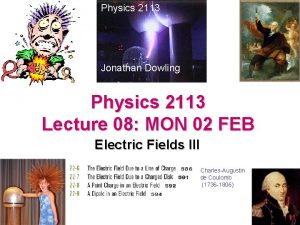Physics 2113 Jonathan Dowling Physics 2113 Lecture 05















- Slides: 15

Physics 2113 Jonathan Dowling Physics 2113 Lecture 05 Electric Fields I Charles-Augustin de Coulomb (1736 -1806)

What Are We Going to Learn? A Road Map • Electric charge - Electric force on other electric charges - Electric field, and electric potential • Moving electric charges : current • Electronic circuit components: batteries, resistors, capacitors • Electric currents - Magnetic field - Magnetic force on moving charges • Time-varying magnetic field & Electric Field • More circuit components: inductors. • Electromagnetic waves - light waves • Geometrical Optics (light rays). • Physical optics (light waves)

Coulomb’s Law Charles-Augustin de Coulomb (1736 -1806) For Charges in a Vacuum k = Often, we write k as:

Sir Michael Faraday’s Electric Lines of Force Electric Force Field Faraday (1791– 1867)

E-Field is E-Force Divided by E-Charge Definition of Electric Field: E-Force on Charge +q 1 –q 2 P 1 P 2 E-Field at Point –q 2 P 1 P 2 Units: F = [N] = [Newton] ; E = [N/C] = [Newton/Coulomb]

Electric Fields • Electric field E at some point in space is defined as the force experienced by an imaginary point charge of +1 C, divided by 1 C. • • • Note that E is a VECTOR. Electric Field of a Point Charge Since E is the force per unit charge, it –q E +1 C is measured in units of N/C. R We measure the electric field using very small positive “test charges”, and dividing the measured force by the magnitude of the charge.

Compare to Gravitational to Electric Fields Gravitational Force: (Units: Newtons = N) Gravitational Field: (Units: N/kg) Electric Force: (Units: Newtons = N) Electric Field: (Units: N/C) Given the Field, Find the Force: (Vector Form)

Compare to Electric Field to Gravitational Field Lines m Note: Field Exists in Empty Space Whether Test Mass m is There or Not! Electric Field Lines +q Note: Field Exists in Empty Space Whether Test Charge +q is There or Not!

Electric Field Lines • Field lines: useful way to visualize electric field E • Field lines start at a positive charge, end at negative charge • E at any point in space is tangential to field line • Field lines are closer where E is stronger Example: a negative point charge — note spherical symmetry

Direction of Electric Field Lines E-Field Vectors Point Away from Positive Charge — Field Source! E-Field Vectors Point Towards Negative Charge — Field Sink!

+qs _ +q. R + ICPP

Superposition of F and E • Question: How do we figure out the force or field due to several point charges? • Answer: consider one charge at a time, calculate the field (a vector!) produced by each charge, and then add all the vectors! (“superposition”) • Useful to look out for SYMMETRY to simplify calculations! • If you never learned to add vectors in 2110 you’ll be in serious trouble in 21132! See online review http: //phys. lsu. edu/~jdowling/ PHYS 21024 SP 10/Vectors. pdf

ICPP Total electric field -2 q +q • 4 charges are placed at the corners of a square as shown. • What is the direction of the electric field at the center of the square? (a) Field is ZERO! (b) Along +y (c) Along +x -q +q is the test charge y +2 q x

ICPP: Which Way is Enet?

 E=q/ae0
E=q/ae0 Jonathan dowling
Jonathan dowling Dowling roundabout
Dowling roundabout International human resource management dowling 6th edition
International human resource management dowling 6th edition Shock mnemonic
Shock mnemonic Dowling optical
Dowling optical Art.2113 cc
Art.2113 cc Afi 36 2113
Afi 36 2113 Comp 2113
Comp 2113 01:640:244 lecture notes - lecture 15: plat, idah, farad
01:640:244 lecture notes - lecture 15: plat, idah, farad Physics 101 lecture notes pdf
Physics 101 lecture notes pdf Physics 111 lecture notes
Physics 111 lecture notes Atmospheric physics lecture notes
Atmospheric physics lecture notes Waves pdf
Waves pdf Physics 101 lecture
Physics 101 lecture Physics 101 lecture 1
Physics 101 lecture 1
